June tends to be prime thunderstorm season so I'm always keeping an eye on the sky to see what the weather is doing and if I need to do anything as a result. In Colorado the prime hail times are Spring and Fall but hail can most certainly happen in the summer with the severe thunderstorms that we can get. With thunderstorms in Colorado they tend to build and move fast and furious. They can very easily catch you off guard if you aren't paying attention (and sometimes even if you are paying attention). This year has been fairly mild for storms so far and there weren't any notable storms in June to speak of, just a few small ones with some wind and rain but nothing worth mentioning.
The wildflower front yard came back in full force this year, which is very exciting! I really haven't had to spend a lot of time weeding it this year as the sheer amount of flowers are crowding out the weeds which is doubly exciting! I also have been watering it about once every other week which seems to be fine overall. In the stretches of heat where is 90+ F (32+ C) for a week without any rain, I should probably switch to watering once a week during those weeks to keep everything from starting to turn brown. There was a whole lot of lettuce that was ready all at once so instead of letting it go to waste, I harvested it all at once, washed it, set about 3 weeks worth of lettuce aside to eat. Then I took the remaining lettuce, pureed it in a blender with some water, put it in jars and froze it! Now I have a whole bunch of fresh lettuce puree that I can use in the winter to add some flavor to rice, quinoa, couscous, or whatever I would like. I will need to add lime to it when I unfreeze it to keep it from turning brown, I should've added that in when I pureed it but I will next year! The strawberries have been going nuts, I'm not sure how many strawberries there have been because none of them have been weighed, they've all been eaten before making it inside the house! There have been a lot of very tasty strawberries though and I'm making rough plans to add a second strawberry patch in one of the few under-utilized and shady parts of the yard. Aphids have been challenging me this year on some of the cabbages. Out of the 15 + cabbages, a few picked up mass amounts of aphids. I did plant marigolds around a lot of the plants this year to try and keep aphids and other pests away, but I didn't plant them early enough in the year. The marigolds should probably be started inside early so they bloom early. Otherwise they grow along with the vegetables and don't bloom until July, which isn't very productive for trying to keep pests away. My approach with the aphids has been to spray and brush them off the leaves with a hose, this actually does a really good job of keeping them at bay and allowing the plants to keep growing. It did turn into a daily morning task though. The ladybugs were out trying to help me by eating the aphids and laying eggs on the cabbage leaves. Ladybug larvae are the ones that eat a lot of aphids, adult ladybugs aren't too helpful in this area, aside from making the larvae. To go back to soil health, a healthy plant that has all of the nutrients available to it in the soil should be able to fend off pests on its own so this leads me to believe that there's a nutrient deficiency in this part of the yard, which means more compost is needed. Keep in mind this is just a theory of mine and is purely speculation, this isn't backed by any science, books, research (that I'm aware of anyways), but as I read more about soil health perhaps I'll find some research that has been done on this. As I add compost to the cabbages it'll be interesting to see what happens with the aphids, but it'll also be hard to tell if any change can be attributed to the compost or if it's the marigolds or something else entirely.
By mid-June a volunteer thai basil plant that's in a flower area by the shed was shoulder high. I had no idea basil plants could grow that tall! As I've been harvesting everything, any excess food has been getting blanched and frozen in vacuum sealed bags. Anything that may potentially go to waste gets frozen for the winter, unless I have something else creative to do with it or if I'm giving it away. I did give away a fair amount of food in June. People always seem surprised that I'm more than willing to part with some of my food (some, not all). I love sharing it with people, you can't buy this kind of fresh tasting food at the grocery store and my underlying hope is fairly selfish in that once people taste how good the food I grow is, MAYBE they'll want to grow their own food at their home. If more people in my town start growing their own food then I'll have people to trade food with!!!! Regardless of that though, it's just fun to share the food with someone and to see / hear what their reaction is to eating it.
The soil health of the wildflower front yard is noticeably better than in prior years, with the small amounts of weeding that I have had to do the yard is teeming with life, there are wild mushrooms growing among all the flowers, worms are everywhere, bees are buzzing, butterflies are flapping, snakes are crawling, birds are squawking. Life is alive and abundant everywhere in the wildflower yard!
A few test garlics were pulled. When the bottom two leaves of the garlic plants start dying off, then it's usually time to harvest them. I always like to pull a few random heads of garlic first, just to make sure they are actually done. I'm always striving for perfection and I don't want to pull all of the garlics too early nor too late so why not test the waters and see how they're doing? I started getting a few small peppers, which was amazing to start getting peppers this early in the season! I really feel like I'm starting to get growing peppers dialed in, which is a fantastic feeling because they've been a pain in my ass in prior years!
I tried growing Celtuce last year but it didn't go so well. This year I tried growing it again, and it went extremely well! It's a really fun plant to grow as the entire plant is edible. I added the leaves to salads, the stalk I would peel (just like a carrot) and add it raw to salads or cook it in stir fry's, etc. It has a light cucumber / asparagus taste, it's pretty great!
All of my hanging pots I started from seed, they're growing very well and by the end of June the nasturiums were starting to pop, which is very exciting! Nasturiums are edible and you can add them to salads or do whatever you'd like with them. They start off with a fresh slightly tropical taste that turns spicy in a very delightful way. I'm loving them!
The variation of broccoli that I'm growing this year has been bolting in the heat but I've still been eating it and getting a few small heads, it's far from being as plentiful as I would like though.
Composting: Since Composting and Soil Health are so important they get their own bold word and capitalization's! In June I spread out 22, five gallon buckets of compost all over the vegetables! That is a whopping 110 gallons of compost (still not enough though..... there will never be enough). All of this compost was made with a traditional compost pile and was not part of the Great Composting Experiment of 2020, which is sure to be a let-down of a post by the time I actually get around to writing it by how much hype I'm giving it (it's really not very exciting, but from a composting standpoint, it's very exciting). However I'm likely going to do one post on traditional composting and a separate one on this radical, hipster, new-age way of composting to compare the two!
I did spread peat moss over the entire yard in late June. This is something that I've never tried and is just a bit of an experiment to try and help the soil maintain more water for longer periods of time.
My preserving food for the winter game was on-point in June. Anything I wasn't going to use right away (or was going to go bad), I washed, put in vacuum sealed bags, and froze. Which came to 20 weeks worth of frozen greens!!!
By the end of June the sunflower madness was well underway!
There wasn't anything else to plant in June (aside from re-seeding what didn't grow) but the harvesting mania did start to ramp up!
Early to Mid June Bounty:
-3 Radishes = 0.23 lbs (.10 kilos)
-Salad Greens = 1.25 lbs (0.57 kilos)
-Kale = 0.43 lbs (0.20 kilos)
-3 Turnips = 0.70 lbs (0.32 kilos)
-Buttercrunch Lettuce Heads = 2.86 lbs (1.30 kilos)
-15 Garlic Scapes - 0.46 lbs (0.21 kilos)
-2 Radishes and 1 Turnip = 0.35 lbs (0.16 kilos)
-Celtuce = 0.34 lbs (0.15 kilos)
-Cilantro = 0.05 lbs (0.02 kilos)
-Bolting Lettuce = 5.49 lbs (2.49 kilos) - This was pureed into 5 jars (added a little water) and frozen for winter which will then be added to rice, quinoa, couscous, stir fry's, etc.
-Kale = 1.33 lbs (0.60 kilos)
-Orach = 1.56 lbs (0.71 kilos)
-Garlic Scapes - 0.68 lbs (0.31 kilos)
-Thai Basil = 0.08 lbs (0.04 kilos)
Mid to Late June Bounty:
-1 Celtuce = 1.08 lbs (0.49 kilos
-2 Bell peppers, 1 lilac pepper, 3 shishitos, 2 Jalapenos = 0.36 lbs (0.16 kilos)
-Lettuce = 1.34 lbs (almost the last of the lettuce) (0.61 kilos)
-4 Green Onions (not much weight at all)
-40 gallons of compost spread
-50 more gallons of compost spread
-Kale = 0.34 lbs (0.15 kilos)
-20 more gallons of compost spread
-Composting Experiment Compost turned
-Replanted things that haven't been growing
-Kale, onions, and herbs = 0.35 lbs (0.16 kilos)
-Celtuce = 0.84 lbs (0.38 kilos)
-Spread peat moss over entire yard
-Kale = 1.82 lbs (0.83 kilos)
-Broccoli and peppers, bok choy, and kale = 1.33 lbs (0.60 kilos)
-Last of Lettuce along with some herbs = 1.80 lbs (0.82 kilos)
-Orach = 2.86 lbs (1.30 kilos)
-Celtuce - 1.92 lbs (0.87 kilos)
-Lettuce Head = 0.55 lbs (0.25 kilos)
-This all amounted to 8 frozen, vaccuum sealed packages of lettuce, 7 of kale, and 5 of orach. Which is 20 weeks worth of frozen greens!!!
-1 Carrot = 0.18 lbs (0.08 kilos)
This all adds up to 30.58 lbs (13.87 kilos)!!! Which when you boil it down to purely numbers, is really not that impressive in the slightest, but let's look at this a different way. Most Americans use their extra space surrounding their homes to water and grow grass, which nets them a grand total of 0 lbs (0 kilos) of food that they can eat. I've utilized this space and have turned my property into a vast and diverse food forest that is the vegetable jungle of my backyard. In May of 2020 I harvested 3.59 lbs (1.63 kilos) of food in this same yard. Which means that for June of 2020 I harvested 8.52 times more food than the prior month! This also brings my yearly total of food harvested for the 2020 growing season up to 34.17 lbs (15.50 kilos) of fresh, local, beyond organic, (insert other hipster phrase here), food in my very own backyard of your average American home in good ol' Longmont, Colorado!!! This number will only grow in the coming months.
 |
 |











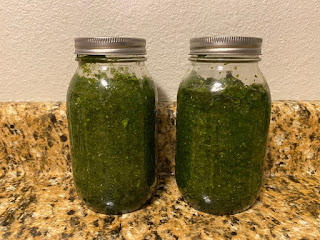










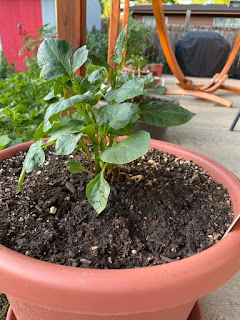



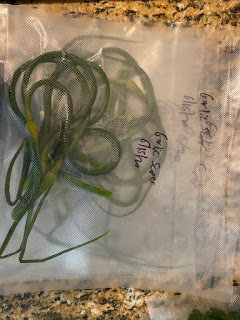







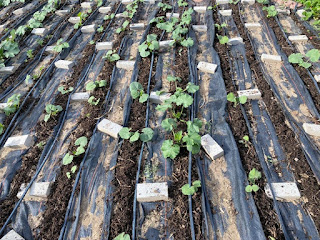


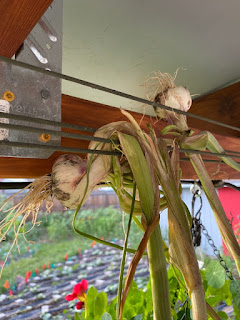









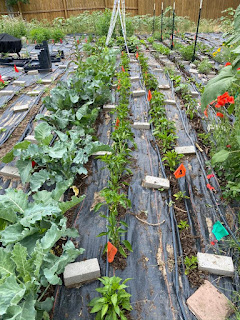









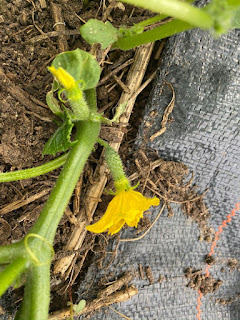
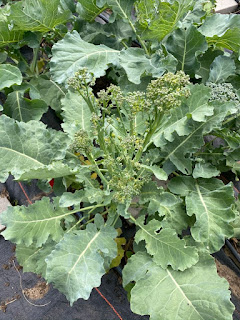

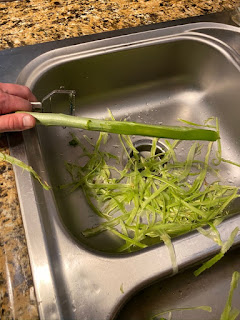
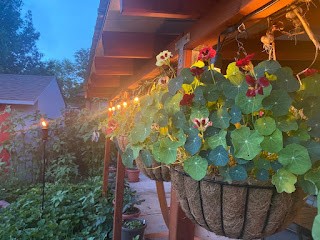

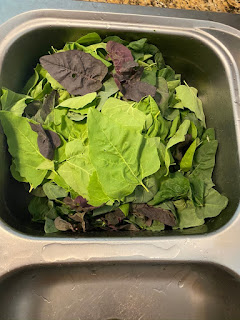



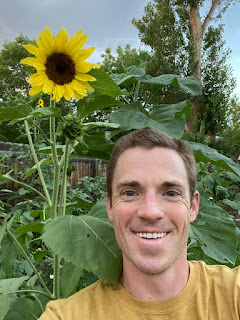

No comments:
Post a Comment